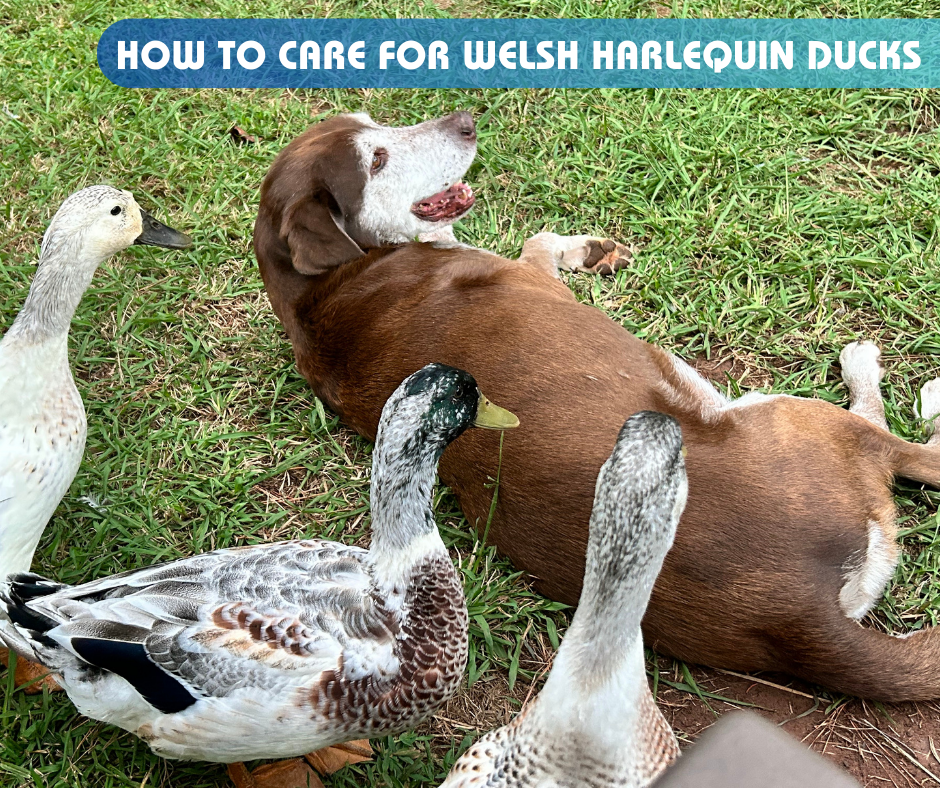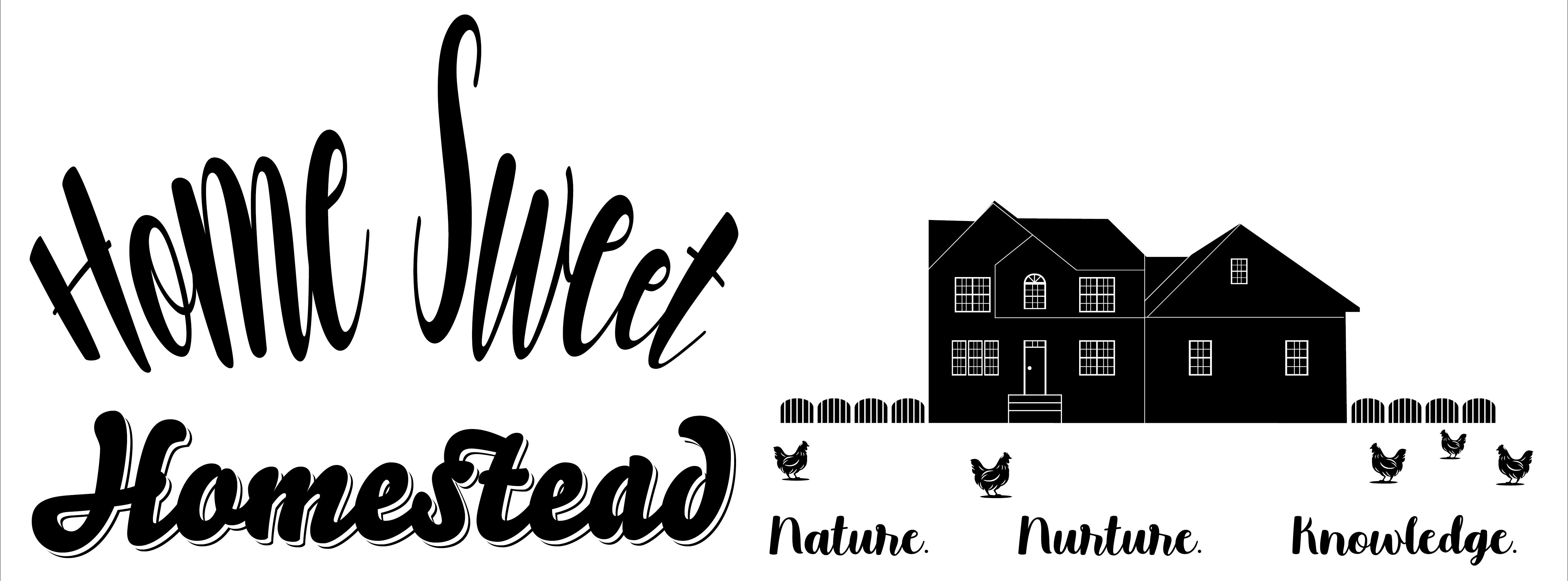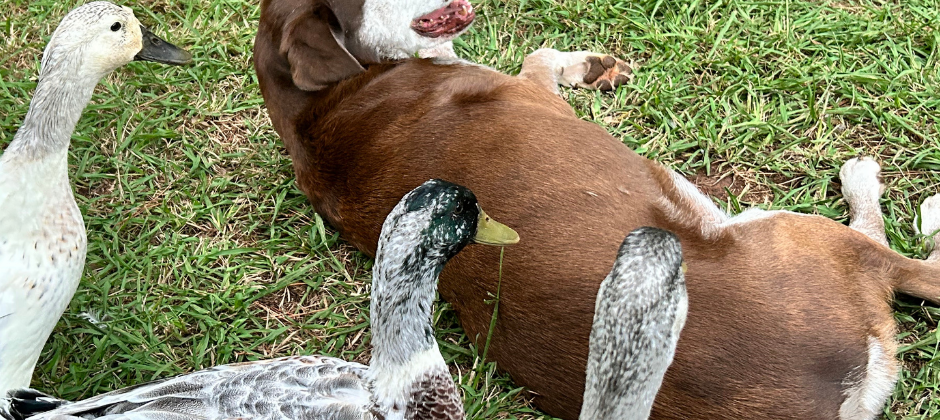
You may have asked yourself the question, “How to care for Welsh Harlequin Ducks?” We have five Welsh Harlequin Ducks (thank you Megan @ The Littles Oasis Hatchery) in our backyard flock and have grown to love them so much! They are their own little family and roam the yard almost as one. If one walks away, the others typically follow. They are really easy birds to care for and would make a great addition to any flock looking to expand into ducks. Here is some information about the breed as well as some quick tips on care.
Welsh Harlequin ducks are a domesticated breed known for their beautiful plumage, friendly temperament, and excellent egg-laying capabilities. They really are beautiful. Our ducks are still growing, but our older two have feathers on the end of their wings that at certain angles look teal, blue, or purple. They do have a friendly temperament, but ours are skittish. They will come near us, but will not let us pet them. They will, however, come close enough to eat out of your hands.
Welsh Harlequin ducks were developed in Wales during the mid-20th century, making them a relatively new breed compared to some other well-established duck breeds.
Key Welsh Harlequin duck characteristics can include:
- Plumage: Welsh Harlequins are easily recognized by their striking coloration. They have a unique “harlequin” pattern, which consists of light silver or white feathers with contrasting areas of iridescent blue-green or dark green. This beautiful and eye-catching plumage is one of the breed’s defining features.
- Egg Production: These ducks are excellent layers, known for their high egg production. They lay a significant number of large white or tinted eggs throughout the year, making them popular choices for backyard flocks and small-scale farming.
- Dual-purpose: While primarily kept for their egg-laying abilities, Welsh Harlequins are also considered dual-purpose ducks, meaning they can be raised for both their eggs and meat. However, they are more commonly valued for their egg production.
- Size: Welsh Harlequins are of medium size, with males (drakes) typically weighing around 5-5.5 pounds (2.3-2.5 kg) and females (ducks) weighing slightly less at 4.5-5 pounds (2-2.3 kg).
- Temperament: They are known for their friendly and docile personalities, which makes them relatively easy to handle and suitable for family-friendly flocks.
- Hardy: Welsh Harlequin ducks are generally hardy birds, adapting well to various climates and living conditions.
- Land happy! Welsh Harlequins are more content on land foraging for food. Since they were bred for egg production and plumage, they are heavier birds and cannot sustain flight. They will most likely not get more than 12 in from the ground.
As you can see, they are great additions to a backyard flock.
Below are some easy tips on how to care for Welsh Harlequin Ducks alongside your chickens:
- Housing: Welsh Harlequins are capable of living in the same coop as your chickens as long as you have room. They do not roost. Instead, they sleep in the bedding in the corner of the coop. We have hemp bedding which is really soft and they are able to “nest” into it. They also cuddle up with each other and go to sleep.
- Run: In our run, we provide food and water (no food or water in the coop).
- Food: Since we have the ducks, chickens, and a rooster, everyone eats Kalmbach 20% Flock Maker (Pellet) (unless there are chicks or ducklings inside a brooder they all get chick starter food). This feed provides a good source of protein for the flock, and the ducks get the niacin they need as well.
- Water: We have two water buckets with cups they all can drink from. The cups are big enough for the ducks to dunk their beaks into. We also provide an additional water source for the ducks. We use a kitty litter box filled with water. The ducks can splash their beaks in and can also get into it one at a time.
- Shade: If you have a ramp and roosting areas for chickens, the shade from them will give the ducks little resting spots.
- Ramp: the ramp needs to be wider than the typical chicken coop ramp. We widened only the ramp, and the door works fine, but since the ducks are broader birds and waddle more than chickens, they need more walking space up the ramp. Also, ensure there is raised footing on the ramp to help assist them upwards.
- Backyard: Welsh Harlequins do not need a pond. So if you don’t have waterfront property, that’s perfectly fine. A simple kiddie pool will suffice. We use a sandbox no longer used by the kids. It’s low enough that they can go in and out as they please. We can fill it enough for them to dunk their entire bodies into. Sure, it gets gross from their poop, but we use it in the garden and then refill it for more ducky fun.
- Treats: Peas are their favorite treat! It provides additional niacin which they need to help their legs stay strong. They will eat whatever you give them though. So far, we have had success with dried black soldier fly larvae, watermelon, cantaloupe, cucumber, mint, apples, figs, and cilantro.
- Handling: Handling the ducks as ducklings is important. You want them to know they can trust you and keep them safe. Now, the ducks outside do not run up to us for cuddles and do not care to be handled now they live outside, but when integrating them outside, they did hide under us for safety and they will come near us and quack when we come out. Probably because they are looking to see if we have treats, which they wholeheartedly take out of our hands.
So we’ve answered the question, “How to care for Welsh Harlequin Ducks?”
Ducks are not complicated. Yes, they are messy when inside your home as itty bitty babies, but once they are outside they really flourish. They are a wonderful addition to our backyard flock!



Leave a Reply